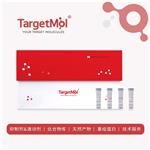Uses
Lipoprotein Lipase from bovine milk has been used:
- as a supplement to test its effect on DiI (1,1′-dioctadecyl-3,3,3′-tetramethyl-indocarbocyanine perchlorate)- very-low-density lipoprotein (VLDL) uptake in breast cancer MDA-MB-231 cells
- to treat human brain microvascular endothelial cells (HBMECs) for the lipolysis of triglyceride-rich lipoproteins (TGRL)
- to test its effect on gene expression in normal human astrocytes
Uses
Lipoprotein Lipase from
Burkholderia sp. has been used in the subcellular fractionation of mussel
Mytilus galloprovincialis to identify the biomolecule attached to cytosolic fraction of okodaic acid. It has also been used to test its effect on serum amyloid A induced granulocyte colony-stimulated factor (G-CSF) expression in response to bacterial lipoprotein.
General Description
Lipoprotein Lipase (LPL) is a glycerol ester hydrolase. Several bacteria that produce LPL, belongs to the genus
Pseudomonas, Serratia and
Mucor.
Biochem/physiol Actions
Malic dehydrogenase catalyzes the dehydrogenation of L-malate by NAD+.
Purification Methods
Purify the lipase by affinity chromatography on heparin-Sepharose; Ki 0.026mM for very low density lipoprotein. It is inhibited by 2-mercaptoethanol, Cys, Ca, Hg, Mg and Mn ions. Protamine sulfate, 1mg of bovine serum albumin/mL or in 50% glycerol at -70o, stabilises the lipase for several days. 60% loss of activity occurs at 0o/1hour in the presence of 1% of bovine serum albumin. [Shirai et al. Biochim Biophys Acta 665 504 1981.] Lipoproteins (from human plasma). Individual human plasma lipid peaks are removed from plasma by ultracentrifugation; then they are separated and purified by agarose-column chromatography. Fractions are characterised immunologically, chemically, electrophoretically and by electron microscopy. [Rudel et al. Biochem J 13 89 1974.]


